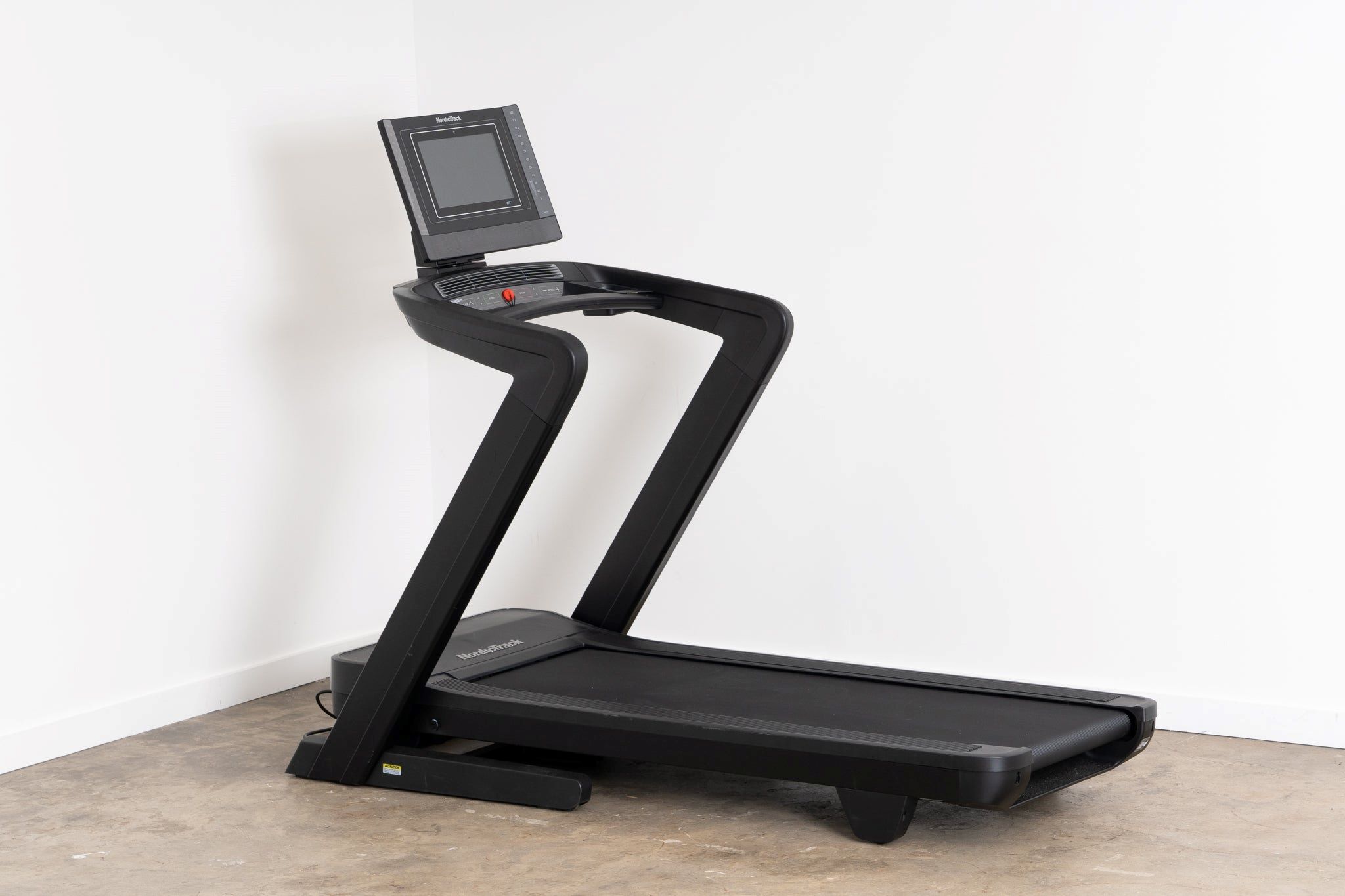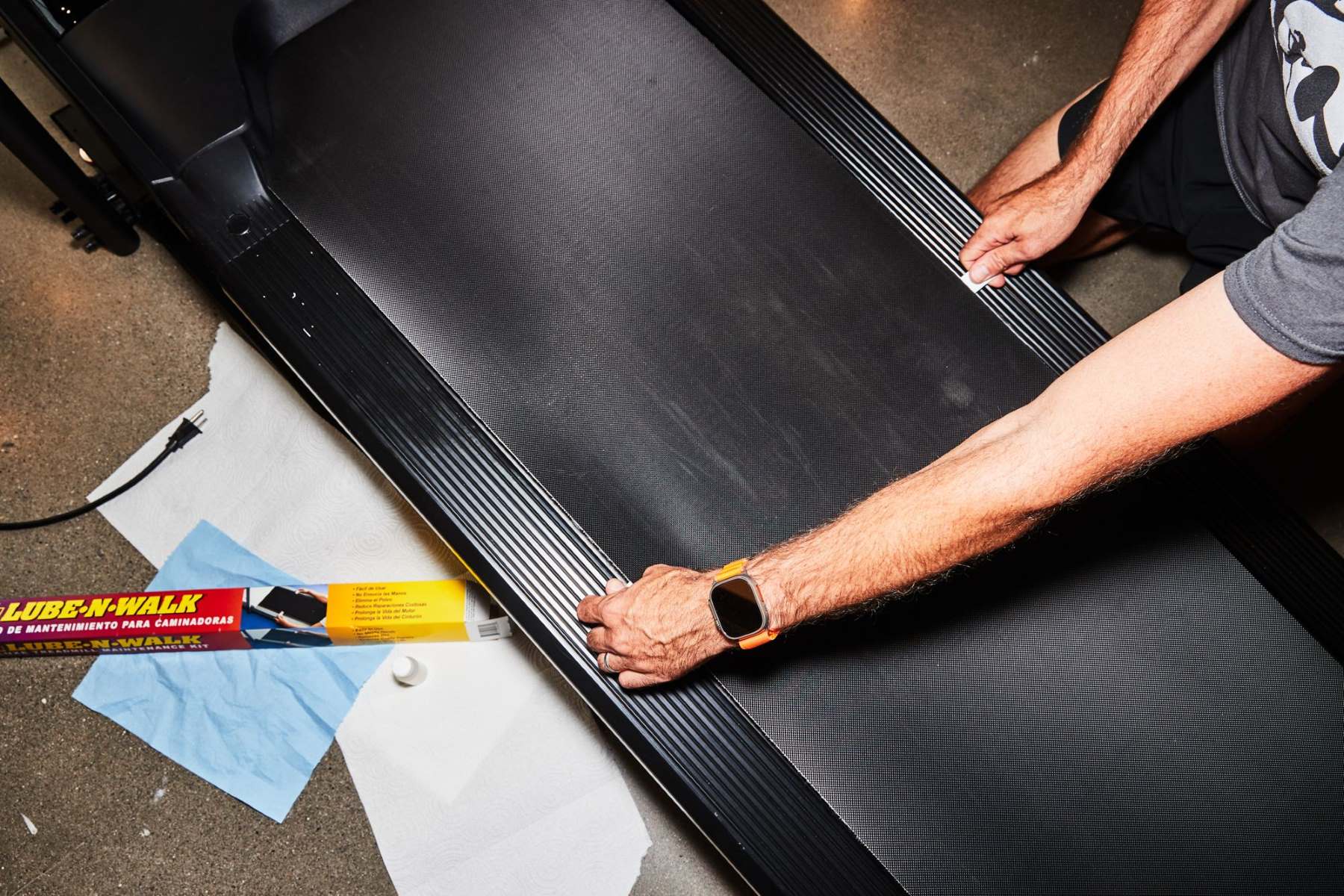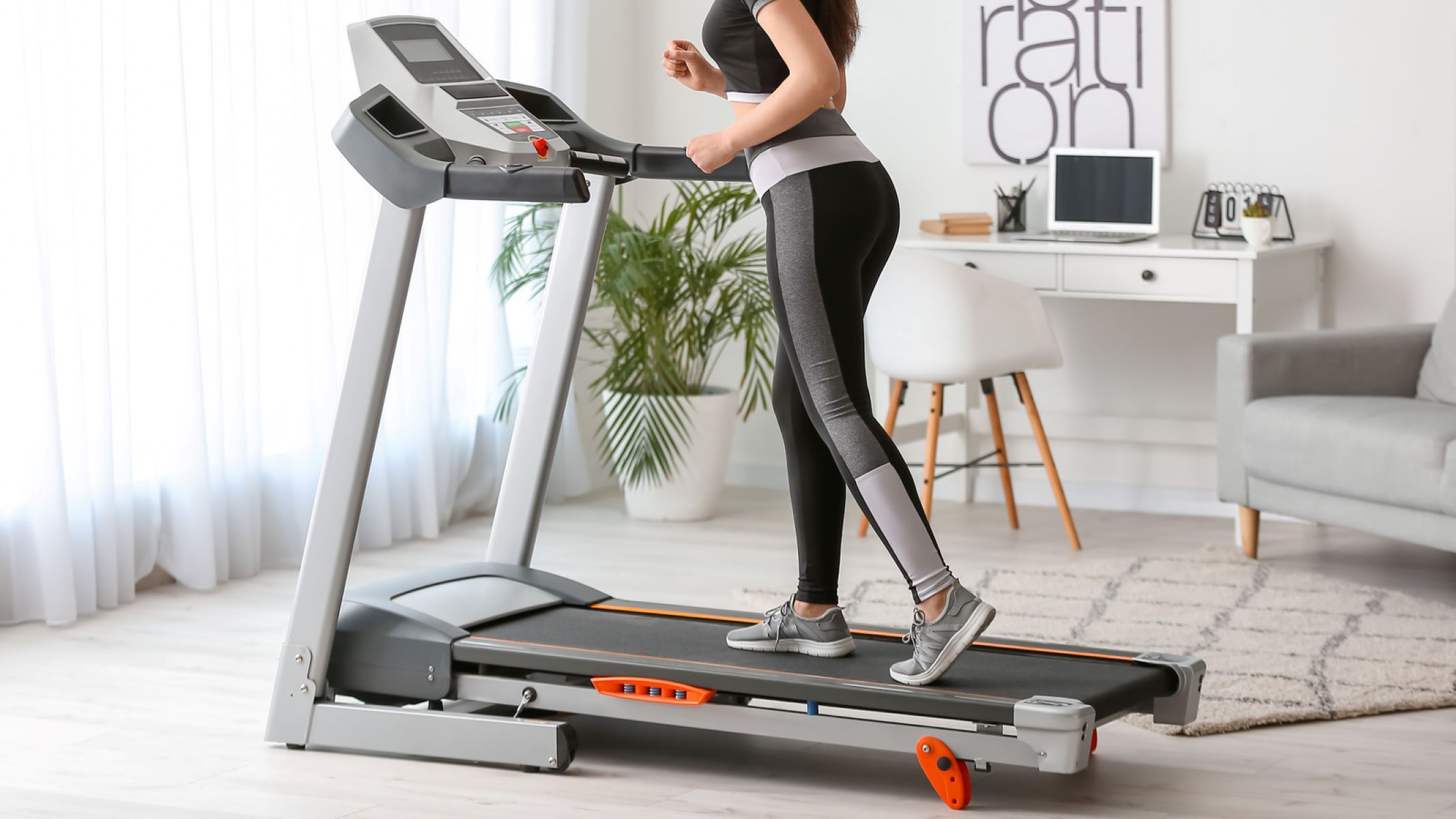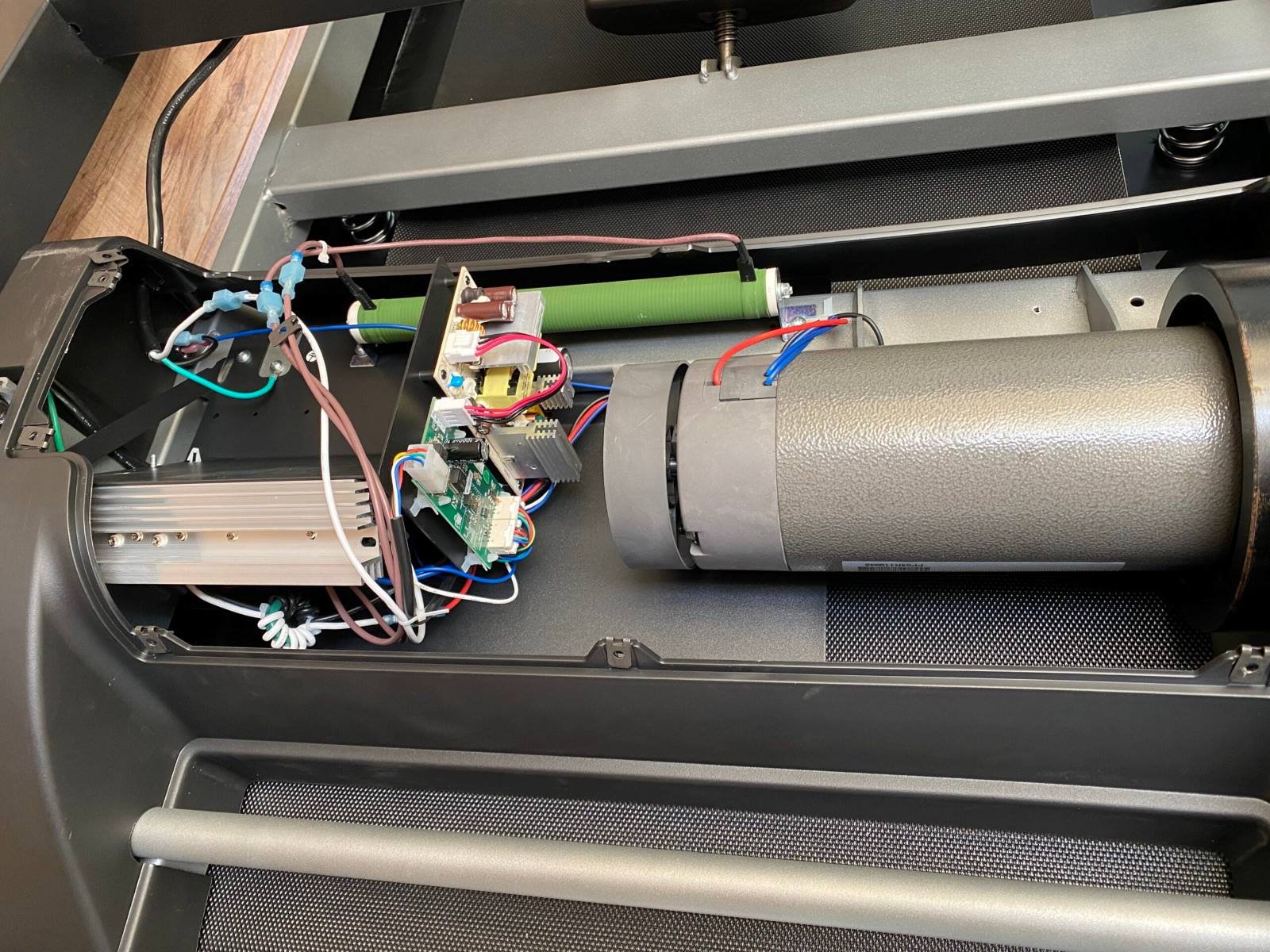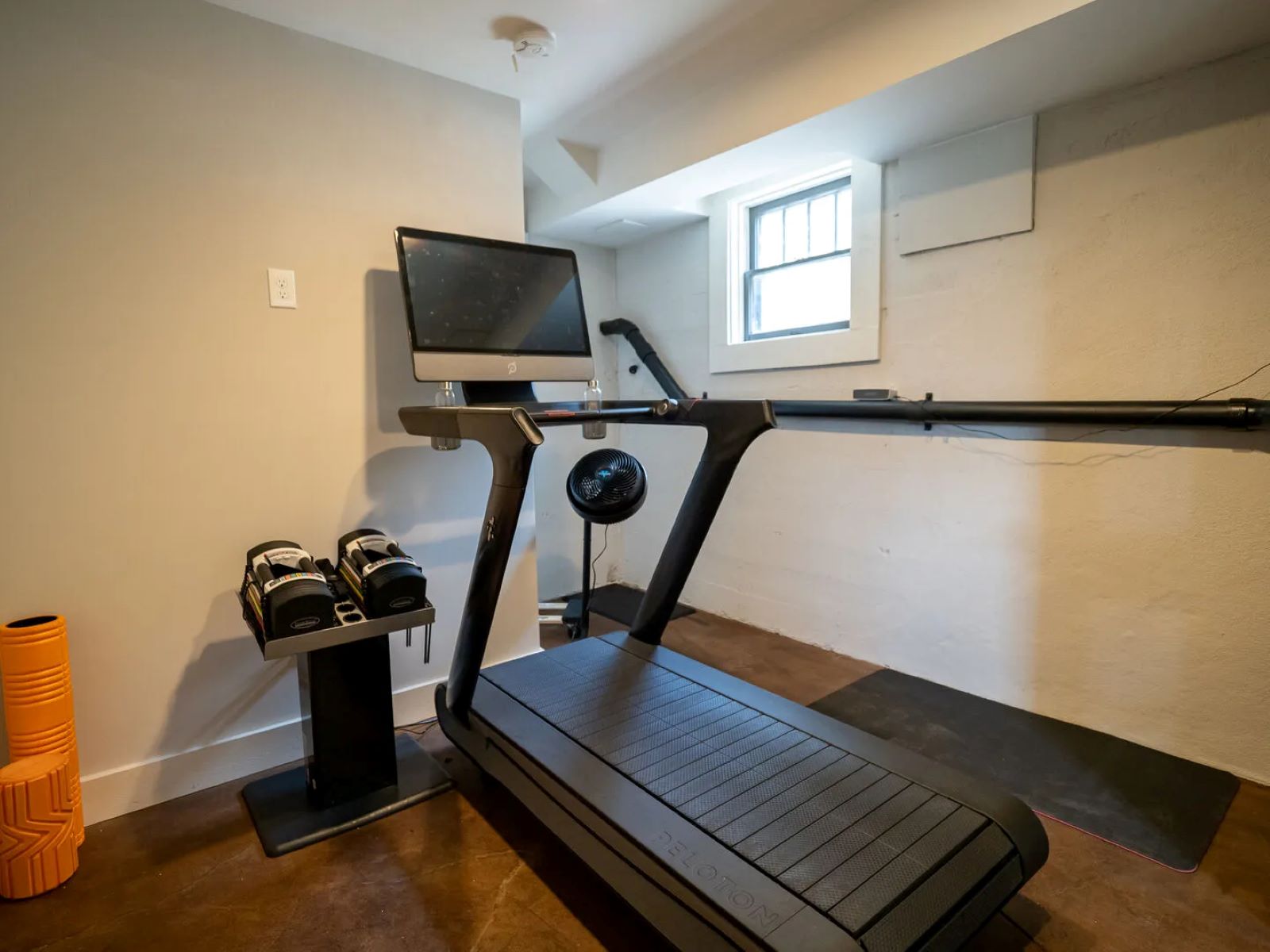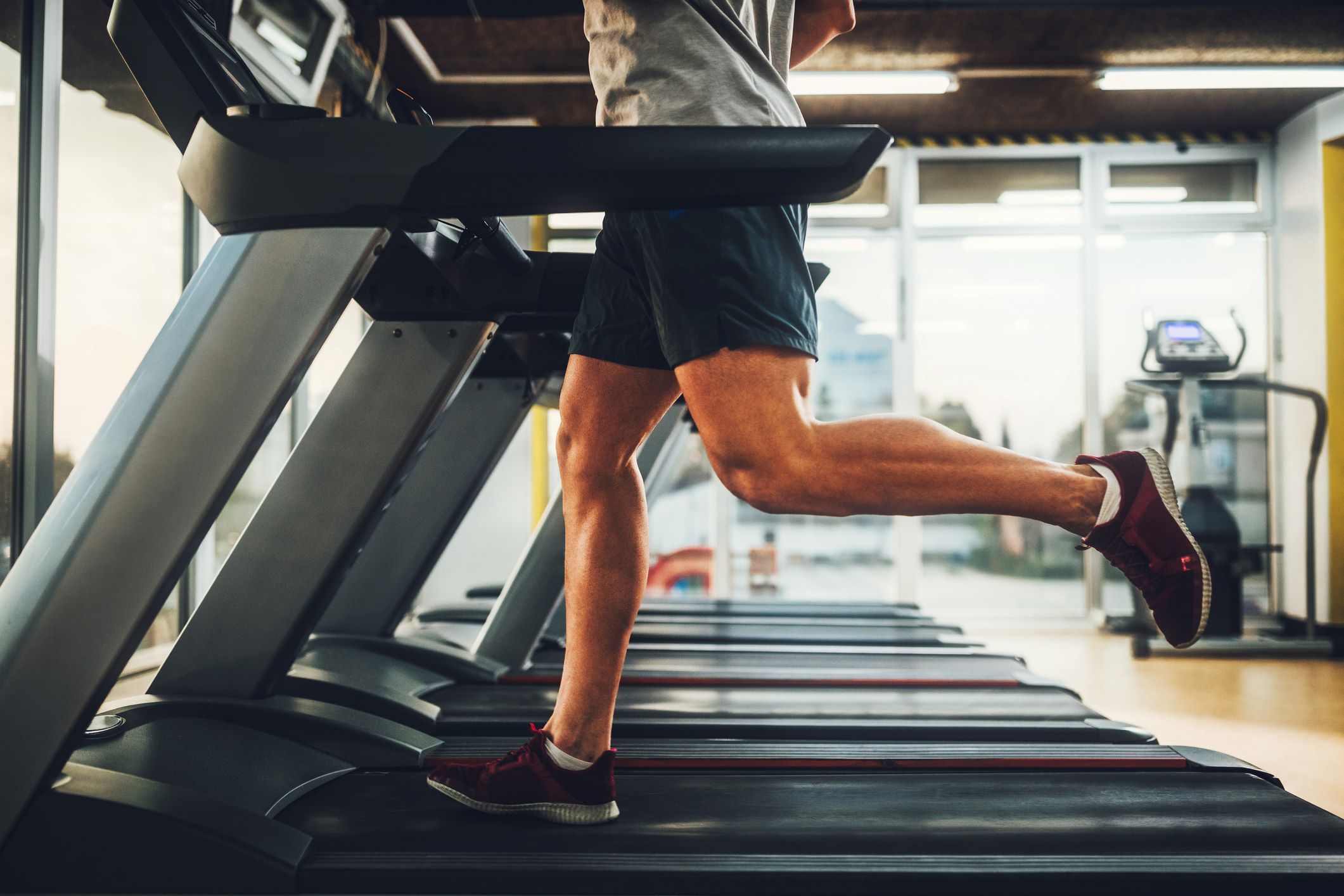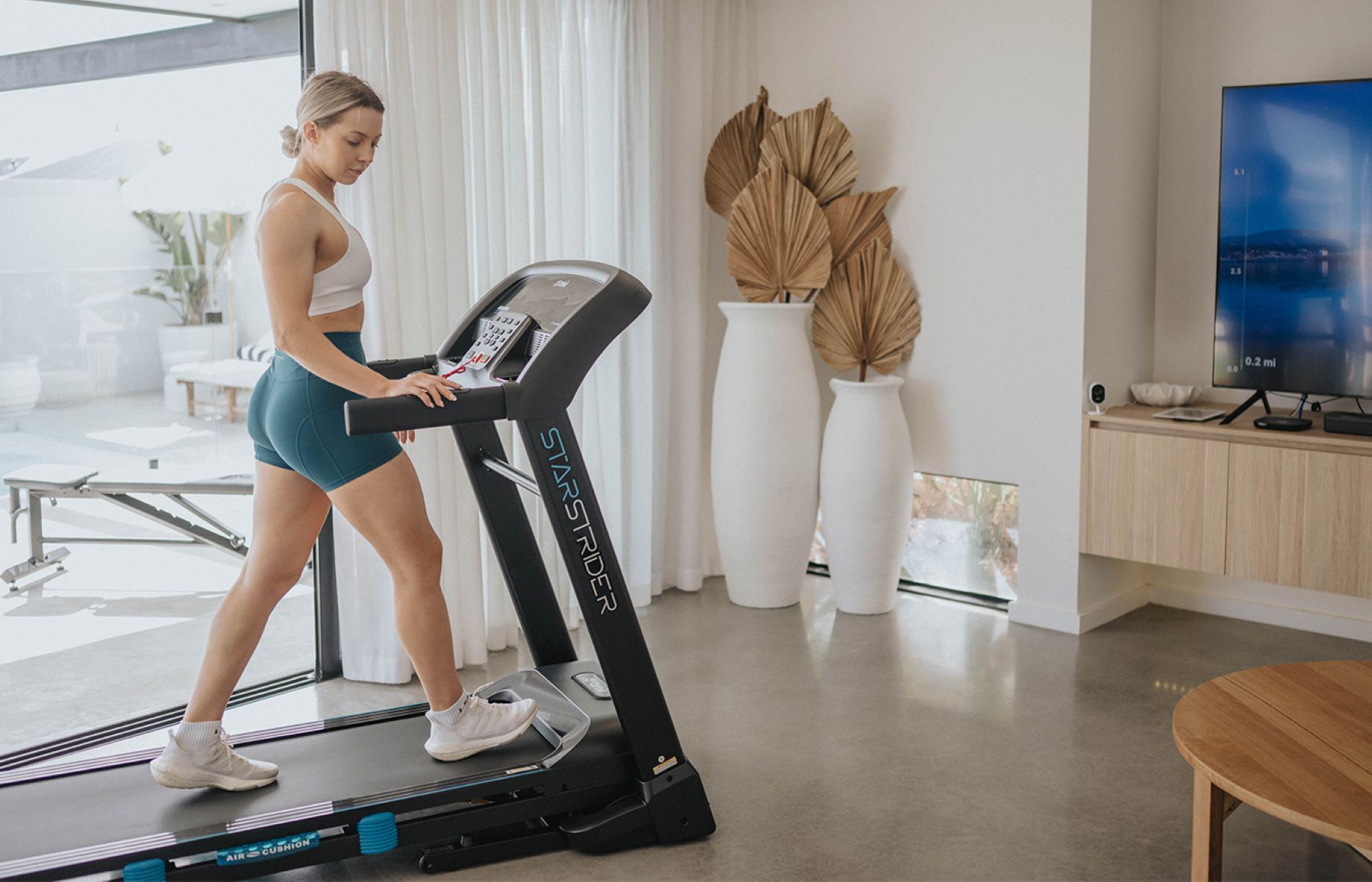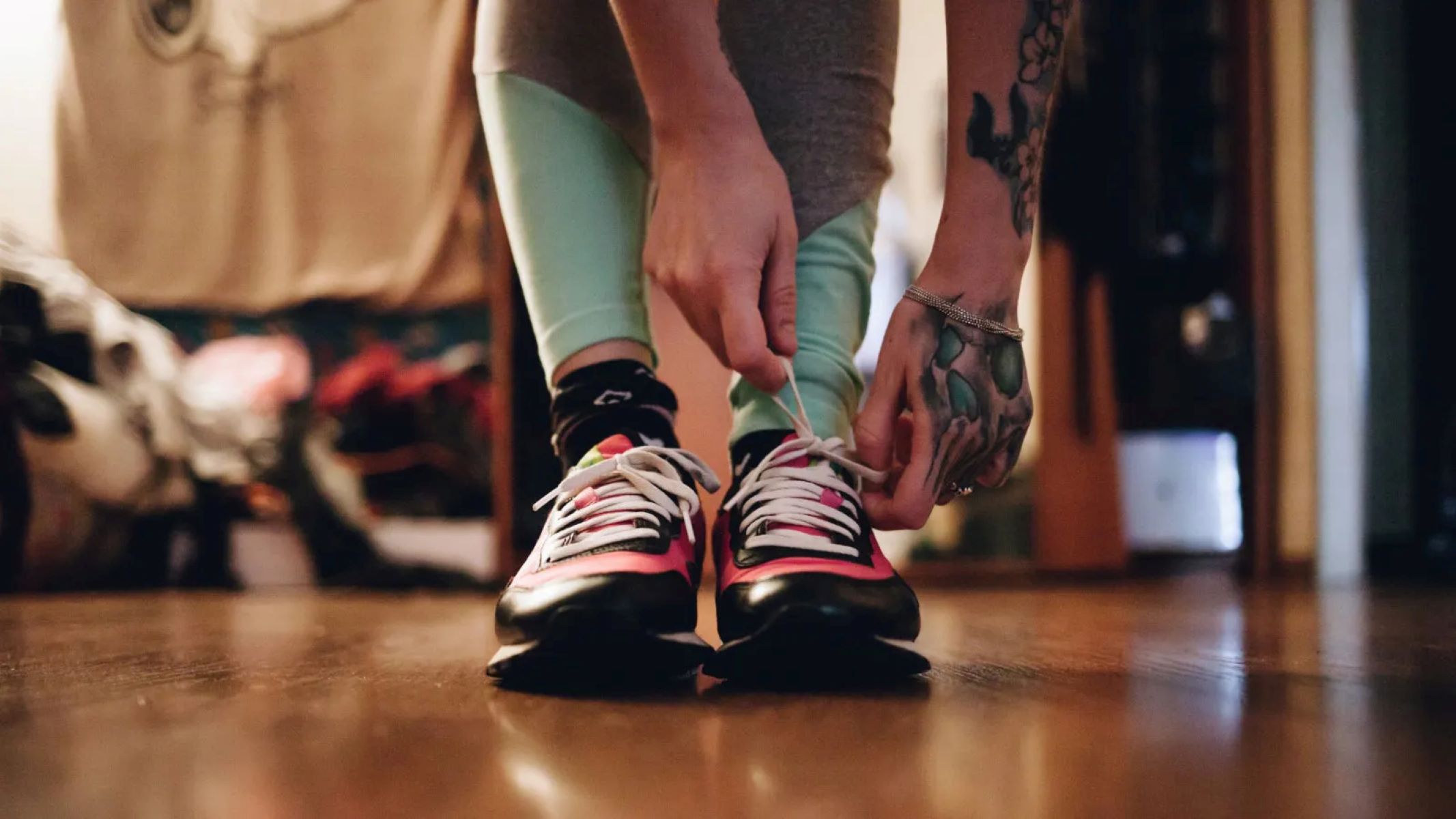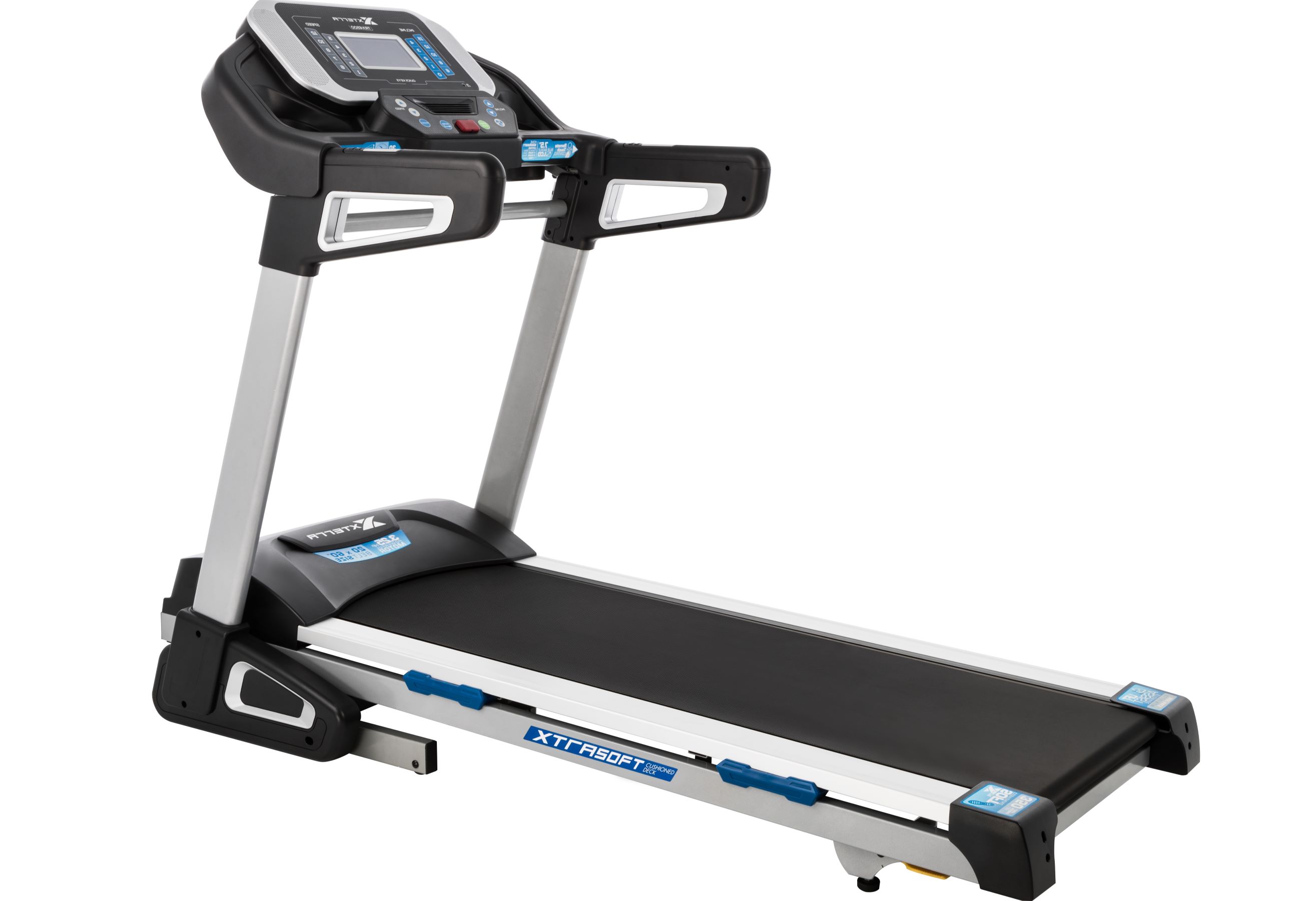

Featured
How To Walk At Home Without A Treadmill
Modified: January 2, 2024
Learn how to walk at home without a treadmill and stay active with our featured workout routines designed to keep you fit and healthy.
Introduction
Welcome to a world where the hustle and bustle of daily life no longer serve as obstacles to achieving a healthy and active lifestyle. Who says you need a treadmill or a gym to get your daily steps in? You can easily incorporate walking into your routine right at the comfort of your own home. Walking at home not only allows you to stay fit but also saves you time and money.
Walking is a low-impact exercise that provides numerous benefits to both your physical and mental well-being. It helps improve cardiovascular fitness, strengthens muscles, boosts mood, reduces stress, and aids in weight management. With a few simple adjustments and some creativity, you can turn any space in your home into a convenient walking track.
In this article, we will explore the different aspects of walking at home, including how to choose the right space, prepare yourself, warm up properly, and incorporate diverse walking techniques to maintain a challenging and engaging workout. Whether you are a beginner or an experienced walker, there are tips and strategies that can enhance your at-home walking experience.
So, let’s lace up our shoes, get ready to walk, and discover the wonderful world of indoor walking!
Benefits of Walking at Home
Walking at home offers a multitude of advantages that make it a great option for incorporating exercise into your daily routine. Here are some key benefits:
- Convenience: One of the biggest benefits of walking at home is the convenience it offers. You don’t have to worry about the weather, transportation, or finding a nearby gym. Simply put on your workout clothes, step into your designated walking space, and you’re ready to go.
- Time-saving: For those with busy schedules, finding time to go to a gym or go for an outdoor walk can be challenging. Walking at home eliminates the need for travel time, allowing you to maximize your workout time and integrate it seamlessly into your daily routine.
- Cost-effective: Gym memberships and expensive exercise equipment can put a dent in your wallet. Walking at home requires minimal to no investment. All you need is a good pair of walking shoes and a suitable space in your home.
- Privacy: Some people feel self-conscious exercising in public or in a gym setting. Walking at home provides a private environment where you can exercise without any distractions or judgment from others.
- Flexible schedule: With at-home walking, you have the freedom to choose when and how long you want to walk. Whether it’s early in the morning, during your lunch break, or in the evening, you have the flexibility to fit it into your schedule.
- Customizable intensity: Walking at home allows you to adjust the intensity of your workout to your own fitness level. Whether you prefer a leisurely stroll or a brisk power walk, you have the freedom to tailor your walking pace to your needs.
- Improved health and fitness: Regular walking, even at a moderate pace, provides a wide range of health benefits. It helps improve cardiovascular health, boost metabolism, strengthen muscles, and enhance overall fitness levels. Walking also reduces the risk of chronic diseases such as heart disease, diabetes, and certain types of cancers.
These benefits make walking at home an attractive option for those looking to lead a healthy, active lifestyle. Whether you’re a beginner or a seasoned walker, walking at home can be a convenient and enjoyable way to stay fit.
Choosing the Right Space
When it comes to walking at home, choosing the right space is crucial for a safe and effective workout. Here are some factors to consider when selecting your walking area:
- Indoor vs. Outdoor: Determine whether you prefer walking indoors or have access to an outdoor area, such as a backyard or a nearby park. Both options have their advantages. Indoor walking provides convenience and protection from the elements, while outdoor walking allows for fresh air and a change of scenery.
- Available Space: Assess the amount of space you have available in your home. Ideally, you should have enough room to take several steps in each direction without any obstructions. Clear out any furniture, rugs, or objects that may pose a tripping hazard.
- Flooring: The type of flooring in your chosen space is important for comfort and safety. Opt for a flat, even surface that provides good traction to prevent slips and falls. Hardwood floors, laminate, or low-pile carpet are suitable options.
- Lighting: Ensure that your chosen space is well-lit, especially if you’re walking during early mornings or late evenings. Sufficient lighting will help you see any potential obstacles and reduce the risk of accidents.
- Air Circulation: If you’re walking indoors, consider the ventilation of the space. Good airflow will help maintain a comfortable temperature and prevent overheating during your workout. Open windows or use fans as needed to increase air circulation.
- Privacy: If privacy is a concern for you, choose a space in your home where you can walk without feeling exposed. This could be a spare room, a basement, or even a hallway with minimal foot traffic.
- Noise Level: Consider the noise level in your chosen space. If you live in an apartment or have neighbors, be mindful of the impact your walking may have on them. Opt for an area with minimal noise disruptions or use a mat or carpet to absorb sound.
By taking these factors into account, you can create a safe and comfortable walking space within your home. Remember, the goal is to find a space that allows you to move freely and enjoy your walking routine.
Preparing Yourself
Before you start your at-home walking routine, it’s important to properly prepare yourself both mentally and physically. Here are some essential steps to take before you hit the ground walking:
- Set Your Goals: Take a moment to establish clear goals for your walking routine. Determine how many steps or minutes you want to walk each day and any specific milestones you want to achieve. Setting goals will help keep you motivated and track your progress.
- Choose Appropriate Clothing: Wear comfortable, breathable clothing that allows free movement. Choose moisture-wicking materials to keep you cool and dry during your workout. Don’t forget to wear supportive, well-fitting shoes that provide cushioning and stability for your feet.
- Stay Hydrated: Drink water before, during, and after your walking session to stay hydrated. Keep a water bottle within reach to sip on as needed. Proper hydration is essential for maintaining energy levels and preventing dehydration.
- Warm Up: Start your walking routine with a warm-up session to prepare your body for exercise. Engage in dynamic stretches and light movements to loosen your muscles and increase circulation. This will help prevent injuries and improve your overall performance.
- Set a Timer: Use a timer or a stopwatch to track your walking time. This will help you stay focused and dedicated to completing your desired workout duration. Alternatively, you can listen to your favorite music or podcasts to keep you engaged throughout your walking session.
- Mind Your Posture: Pay attention to your posture while walking. Keep your head up, shoulders relaxed, and engage your core muscles. Swing your arms naturally with each step. Maintaining proper posture not only improves your walking form but also reduces the risk of strain or discomfort.
- Listen to Your Body: Be aware of how your body feels during your walk. If you experience any pain, excessive fatigue, or difficulty breathing, slow down or take a break. It’s important to listen to your body’s cues and adapt your walking routine accordingly to avoid overexertion or injury.
- Monitor Your Progress: Keep track of your progress by using a fitness tracker or smartphone app that counts your steps and calculates the distance covered. Regularly reviewing your progress can be motivating and help you stay committed to your walking routine.
By following these preparation steps, you can ensure that you’re ready and equipped for a successful at-home walking session. Remember to take it at your own pace and enjoy the journey as you improve your fitness and well-being.
Warm-up Exercises
Before you start your walking routine, it’s important to warm up your body to prepare for the activity ahead. A proper warm-up helps increase blood flow, loosens up your muscles, and reduces the risk of injury. Here are some effective warm-up exercises to incorporate into your at-home walking routine:
- Marching in Place: Start by standing with your feet hip-width apart and raise your knees alternately towards your chest, resembling a marching motion. Keep your core engaged, and swing your arms naturally as you march. Continue for 1-2 minutes to gradually increase your heart rate.
- Side Leg Lifts: Stand tall with your feet together. Lift one leg out to the side as high as comfortable, then return it to the starting position. Repeat this movement on each leg for 10-15 repetitions. Side leg lifts engage the hip abductors and warm up the lower body muscles.
- Arm Circles: Extend your arms out to the sides at shoulder height. Start making small forward circles with your arms, gradually increasing the size of the circles. After 10-15 repetitions, reverse the direction and make backward circles. This exercise helps warm up the shoulder joints and upper body muscles.
- Toe Touches: Stand with your feet hip-width apart and slowly bend forward at the waist, reaching towards your toes. Hold the stretch for a few seconds, then slowly rise back up. Repeat this movement 10-15 times to stretch the hamstring muscles and improve flexibility in the lower back.
- Torso Twists: Stand with your feet hip-width apart and place your hands on your hips. Twist your upper body from side to side, allowing your arms to swing gently with the movement. Perform 10-15 twists in each direction to warm up the core and increase mobility in the torso.
- Ankle Rotations: While standing, lift one foot slightly off the ground and rotate your ankle clockwise for 10-15 seconds, then reverse the direction and rotate it counterclockwise. Repeat this exercise on the other foot. Ankle rotations help mobilize the ankle joints and improve stability.
Perform these warm-up exercises for at least 5-10 minutes before starting your at-home walking routine. Feel free to modify or add additional stretches based on your personal preferences and needs. Remember, warming up not only prepares your body but also helps shift your mindset into exercise mode, ensuring a safe and effective workout.
Walking Techniques
Walking seems like a simple task, but a few adjustments to your technique can significantly enhance the effectiveness and enjoyment of your at-home walking routine. Here are some walking techniques to keep in mind:
- Proper Foot Placement: Focus on landing on your heel and rolling through your foot to your toes with each step. This promotes a more natural stride and helps distribute impact evenly, reducing the risk of strain on your joints and muscles.
- Stride Length: Take comfortable, medium-length strides as you walk. Avoid overstriding, which can strain your muscles and joints. Aim to maintain a steady pace that allows you to walk with ease and maintain good posture.
- Avoid Leaning Forward: Keep your body upright and avoid leaning too far forward or backward. Engage your core muscles to maintain proper alignment and stability. This helps prevent excessive strain on your back and promotes efficient movement.
- Breathe Deeply: Take deep, rhythmic breaths as you walk. Inhale through your nose, filling your lungs, and exhale through your mouth. Deep breathing helps increase oxygen flow to your muscles, providing them with the necessary energy to sustain your workout.
- Swing Your Arms: Allow your arms to swing naturally with each stride. This helps maintain balance and propels you forward. To engage your upper body further, pump your arms slightly. This increases your overall calorie burn and adds intensity to your walking workout.
- Maintain Good Posture: Keep your head up, shoulders relaxed, and your gaze forward. Avoid slouching or looking down at the ground. Maintaining good posture not only promotes better breathing but also prevents strain on your neck, shoulders, and upper back.
- Pick Up the Pace: Once you’ve mastered the basics of walking, you can gradually increase your walking speed to challenge yourself. Incorporate intervals of brisk walking or power walking into your routine to boost intensity and elevate your heart rate.
- Vary Your Terrain: If possible, switch up your walking surface to add variety and challenge your muscles. Walk on different textures such as grass, sand, or a slight incline to engage different muscle groups and make your workout more interesting.
Experiment with these techniques to find what works best for you. Remember to start at a comfortable pace and gradually incorporate these adjustments into your at-home walking routine. By focusing on proper form and technique, you can maximize the benefits of your walking workout and make each step count.
Adding Intensity
While walking is generally a low-impact exercise, you can add intensity to your at-home walking routine to challenge your body and maximize the benefits. Here are some ways to increase the intensity of your walks:
- Incorporate Interval Training: Alternate between periods of brisk walking and slower, more relaxed walking. This interval training approach helps boost your heart rate and increase calorie burn. Start with shorter intervals, such as 1-2 minutes of brisk walking followed by 2-3 minutes of recovery walking, and gradually increase the duration and intensity as you progress.
- Add Inclines: If you have access to a treadmill with an incline feature or live in an area with hills, incorporate uphill walking into your routine. Walking uphill engages more muscles, increases cardiovascular demands, and adds intensity to your workout. If using a treadmill, start with a modest incline and gradually increase it over time.
- Interval Run-Walks: Instead of solely walking, incorporate short running intervals into your routine. This variation helps elevate your heart rate and adds a cardiovascular challenge. Start with a slow jog for 30 seconds to 1 minute, then return to a comfortable walking pace for recovery. Gradually increase the duration and intensity of the running intervals as your fitness level improves.
- Utilize Stairs: If you have a staircase in your home or access to a set of stairs, include stair climbing intervals in your walking routine. Take each step deliberately, engaging your leg muscles. Use the stairs as a way to increase the intensity of your workout and challenge your cardiovascular system.
- Add Weighted Exercises: Integrate upper body exercises, such as carrying light dumbbells or using resistance bands, into your walking routine. This helps engage your arm, shoulder, and back muscles, increasing overall calorie expenditure and toning your upper body. Be cautious not to use too much weight, as it may disrupt your walking form.
- Track Your Steps: If you’re walking indoors, use a pedometer or fitness tracking app to set step goals for each session. Challenge yourself to gradually increase your step count, encouraging longer distances and higher intensity over time. This provides a tangible goal and helps you stay motivated.
Remember to listen to your body and gradually increase intensity to avoid overexertion or injury. Adding intensity to your at-home walking routine helps elevate your workout, improves cardiovascular fitness, and increases overall calorie burn. Find the methods that work best for you and keep challenging yourself as your fitness level progresses.
Incorporating Upper Body Movements
While walking primarily engages the lower body, you can enhance your at-home walking routine by incorporating upper body movements. By involving your arms, shoulders, and core, you can increase calorie burn and engage additional muscle groups. Here are some ways to incorporate upper body movements into your walks:
- Arm Swings: As you walk, swing your arms forward and backward in a controlled motion. Bend your elbows at a 90-degree angle and maintain a relaxed but engaged posture. The swinging motion helps elevate your heart rate, burn more calories, and engage your upper body muscles.
- Arm Raises: During your walk, periodically raise your arms straight out in front of you, parallel to the ground, and then lower them back down. This exercise targets your shoulder muscles and adds an extra challenge to your upper body while you walk.
- Overhead Reaches: Intermittently stretch your arms overhead as you walk. As you extend your arms above your head, engage your core and feel the stretch in your back and shoulders. This movement not only works your upper body but also helps improve posture and flexibility.
- Side Bends: Incorporate side bends into your walking routine by reaching one arm over your head and bending your torso to the opposite side. Alternate sides as you walk to engage your oblique muscles and improve core stability. As you bend, focus on maintaining a straight posture and avoiding excessive leaning or twisting.
- Chest Presses: If you have lightweight dumbbells or resistance bands, incorporate chest presses into your walking routine. Hold the weights or bands at chest level and push them forward, extending your arms straight out in front of you. This exercise targets your chest, shoulders, and triceps, adding resistance to your upper body movements.
- Back Squeezes: While walking, periodically squeeze your shoulder blades together, as if trying to hold a pencil between them. This movement targets your upper back muscles and helps improve posture and stability. Focus on keeping your spine aligned and avoiding excessive tension in your neck and shoulders.
- Torso Twists: Engage your core and oblique muscles by incorporating torso twists as you walk. Twist your upper body from side to side, allowing your arms to swing naturally with the movement. This exercise targets your abdominal muscles and adds a dynamic element to your walk.
These upper body movements can be incorporated throughout your at-home walking routine. Start with lighter movements and gradually increase the intensity and duration over time. Remember to maintain proper form, listen to your body, and enjoy the full-body workout experience as you combine walking with upper body engagement.
Cooling Down
After completing your at-home walking session, it’s important to allow your body to gradually transition from exercise to a resting state. Cooling down helps prevent post-workout muscle stiffness, dizziness, and facilitates the recovery process. Here are some effective cooling down techniques to incorporate into your routine:
- Slow Your Pace: As you near the end of your walking session, gradually slow down your pace. Transition from brisk walking to a more relaxed pace, allowing your heart rate and breathing to gradually return to normal. This gradual slowdown helps prevent dizziness or lightheadedness.
- Deep Breathing: Practice deep breathing exercises to help relax your body and lower your heart rate. Inhale deeply through your nose, filling your lungs, and exhale slowly through your mouth. Focus on elongating the exhales to release tension and promote relaxation.
- Stretch Your Muscles: Perform gentle stretches targeting the major muscle groups you used during your walk. Focus on areas such as your calves, hamstrings, quadriceps, chest, shoulders, and back. Hold each stretch for 15-30 seconds and remember to stretch both sides of your body evenly.
- Hydrate: Drink water to rehydrate your body after the workout. Replenishing lost fluids is essential for recovery and overall well-being. Take small sips of water and continue to hydrate throughout the day.
- Reflect and Relax: Take a few minutes to reflect on your walking session and appreciate the effort you put into taking care of your health. Use this time to relax your mind and body. You can sit quietly, practice meditation, or perform gentle mood-boosting exercises, such as deep breathing or yoga poses.
- Record Your Progress: Take a moment to document your walking achievements. Make a note of the distance covered, steps taken, or any other relevant metrics. Monitoring your progress can help motivate and inspire you to continue your at-home walking routine.
Remember, the cooling-down phase should last for approximately 5-10 minutes. The goal is to allow your body to gradually transition from exercise to rest, promoting efficient recovery and minimizing post-workout discomfort. By incorporating these cooling-down techniques into your routine, you can optimize the benefits of your at-home walking workout and set yourself up for a speedy recovery.
Safety Precautions
While walking at home is generally a safe and low-impact exercise, it’s important to take certain safety precautions to prevent injuries and ensure a positive and enjoyable experience. Here are some essential safety tips to keep in mind:
- Consult with Your Doctor: If you have any underlying health conditions or concerns, it’s always a good idea to consult with your healthcare provider before starting a new exercise routine, including walking at home. They can provide guidance based on your individual needs and help ensure your safety.
- Wear the Right Shoes: Invest in a pair of comfortable and supportive walking shoes. Proper footwear provides cushioning, stability, and arch support. Avoid walking in shoes that are worn out or unsuitable for exercise, as these can increase the risk of foot and ankle injuries.
- Pay Attention to the Surface: Ensure that your walking surface is free from hazards such as loose rugs, cords, or other objects that may cause you to trip or fall. If walking outdoors, be cautious of uneven terrain, cracks, or potholes that could pose a risk. Select a safe and well-lit path or trail when walking outside.
- Stay Hydrated: Drink water before, during, and after your walking session to stay properly hydrated. Even if you’re walking indoors, your body still sweats and requires fluid replenishment. Keep a water bottle nearby and take regular sips to maintain hydration levels.
- Listen to Your Body: Pay attention to how your body feels during your walking routine. If you experience chest pain, dizziness, shortness of breath, or any unusual symptoms, stop exercising and seek medical attention if necessary. Pushing through pain or discomfort can lead to further injury or health complications.
- Start Slowly: If you’re new to walking or returning to exercise after a long break, start with shorter walks at a comfortable pace. Gradually increase your duration and intensity over time to allow your body to adapt and avoid overexertion.
- Be Visible: If you’re walking outdoors during low-light conditions, wear reflective clothing or accessories to make yourself more visible to motorists and other pedestrians. Consider carrying a flashlight or wearing a headlamp to improve visibility and reduce the risk of accidents.
- Follow COVID-19 Guidelines: If you’re walking indoors at a shared space or in a gym, adhere to local regulations and follow COVID-19 safety guidelines. Maintain physical distance from others, wear a mask when necessary, and sanitize any equipment or surfaces you come in contact with.
Prioritizing your safety is crucial for a successful at-home walking routine. By following these safety precautions, you can minimize the risk of injuries and create a safe environment for your walking sessions. Remember, it’s always better to take preventative measures and exercise caution to ensure a smooth and enjoyable walking experience.
Conclusion
Walking at home offers a convenient, cost-effective, and flexible way to incorporate exercise into your daily routine. Whether you’re unable to go to the gym or prefer the comfort and privacy of your own space, walking at home provides numerous benefits for your physical and mental well-being.
In this article, we explored the benefits of walking at home, including convenience, time-saving, cost-effectiveness, privacy, flexibility, customizable intensity, and improved health and fitness. We also discussed important factors to consider when choosing the right space, such as indoor vs. outdoor options, available space, flooring, lighting, air circulation, privacy, and noise level.
We highlighted the importance of preparing yourself mentally and physically before each walking session, including setting goals, wearing appropriate clothing, staying hydrated, warming up with exercises like marching in place and side leg lifts, and monitoring your progress. We also discussed various walking techniques to optimize your workout, such as proper foot placement, stride length, avoiding leaning forward, and breathing deeply.
To take your at-home walking routine to the next level, we explored ways to add intensity, including incorporating interval training, inclines, interval run-walks, and weighted exercises, as well as how to engage your upper body muscles through arm swings, arm raises, and chest presses. Additionally, we emphasized the importance of cooling down after each session through slowing your pace, deep breathing, stretching, hydration, reflection, and recording your progress.
Finally, we emphasized the importance of safety by consulting with your doctor, wearing the right shoes, paying attention to the surface, staying hydrated, listening to your body, starting slowly, being visible, and following COVID-19 guidelines when applicable.
Now that you have all the information and tips to start walking at home, lace up your shoes, choose a suitable space, and embark on a journey to a healthier and more active lifestyle. Get ready to reap the numerous benefits of walking while enjoying the comfort and convenience of your own home. So, let’s lace up and step into a new world of fitness, one walk at a time!
